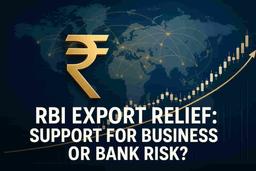Eureka Forbes, known for its Aquaguard brand, reported robust Q3 results with 15% revenue growth and 32% net profit increase, showing an eighth consecutive quarter of double-digit growth. The company faces increasing competition from digital-first rivals like Urban Company and Atomberg, who challenge its traditional service-heavy model with transparent pricing and lower ownership costs. Despite these pressures, Eureka Forbes is expanding its purifier portfolio and digitizing services to capture the growing Indian water purifier market, which is projected to reach ₹14,350 crore by FY29.
Eureka Forbes has delivered impressive financial results for the September quarter, showcasing resilience against mounting competition. Revenue surged by nearly 15% year-on-year to ₹773.4 crore, marking its eighth consecutive quarter of double-digit growth. Net profit saw a significant jump of 32% to ₹61.6 crore, and adjusted Earnings Before Interest, Taxes, Depreciation, and Amortization (Ebitda) surpassed ₹100 crore for the first time, achieving a lifetime-high margin of 13.1%. Even its after-sales service business, including annual maintenance contracts (AMCs), showed renewed double-digit growth after a period of stagnation.
However, the company is facing intense competition from new-age, digital-first companies like Urban Company (with its Native brand) and Atomberg Technologies. These rivals are disrupting Eureka Forbes' long-standing service-heavy model by offering transparent pricing, predictable servicing, and lower overall ownership costs. They directly target customer concerns about affordability and the lifetime cost of ownership, threatening Eureka Forbes' significant revenue stream from after-sales services. While Urban Company's Native brand is growing, it is still working towards profitability, whereas Eureka Forbes remains a profitable entity.
The Indian water purifier market is poised for substantial growth, estimated at 10.1% annualized growth from ₹8,860 crore in FY24 to ₹14,350 crore by FY29, according to The Knowledge Co. This expansion is driven by increasing water contamination concerns and a currently modest penetration rate of approximately 7%. Eureka Forbes' purifier portfolio is growing faster than the broader market, expanding nearly 12% annually and projected to grow at 14% through FY28.
To counter competitive pressures and address market hurdles like affordability and service experience, Eureka Forbes is implementing several strategies. It has launched entry-level purifiers priced around ₹7,000 with two-year filter life, attracting over 70% first-time buyers. The company is also transforming its service delivery by digitizing its technician fleet, introducing real-time tracking, enabling slot selection, and shifting most service requests online through its app and website, which boasts over one million monthly active users. It views the unorganized technician network as partners rather than competitors, integrating them into its service ecosystem. The company also maintains a strong financial position with a return on capital employed (RoCE) of over 350% and a net cash position.
Impact
This intensified competition and Eureka Forbes' strategic responses are shaping the future of the water purifier market in India. Investors will watch how Eureka Forbes balances growth with profitability against agile disruptors. The company's ability to leverage its large customer base and service network while adapting to digital expectations will be crucial. The overall market is expected to see significant expansion, benefiting players who can effectively address consumer needs for affordability, reliable service, and value.
Rating: 8/10
Difficult Terms:
Ebitda (Earnings Before Interest, Taxes, Depreciation, and Amortization): A measure of a company's operating performance, indicating profitability before accounting for financing costs, taxes, and non-cash expenses like depreciation and amortization.
CAGR (Compound Annual Growth Rate): The average annual growth rate of an investment or metric over a specified period, assuming profits are reinvested.
RoCE (Return on Capital Employed): A profitability ratio that measures how efficiently a company uses its capital to generate profits.
AMC (Annual Maintenance Contract): An agreement where a customer pays a fee to a service provider for maintenance and repair services for a product over a year.
P&L (Profit and Loss): A financial statement that reports a company's financial performance over a specific accounting period, summarizing revenues, costs, and expenses.


